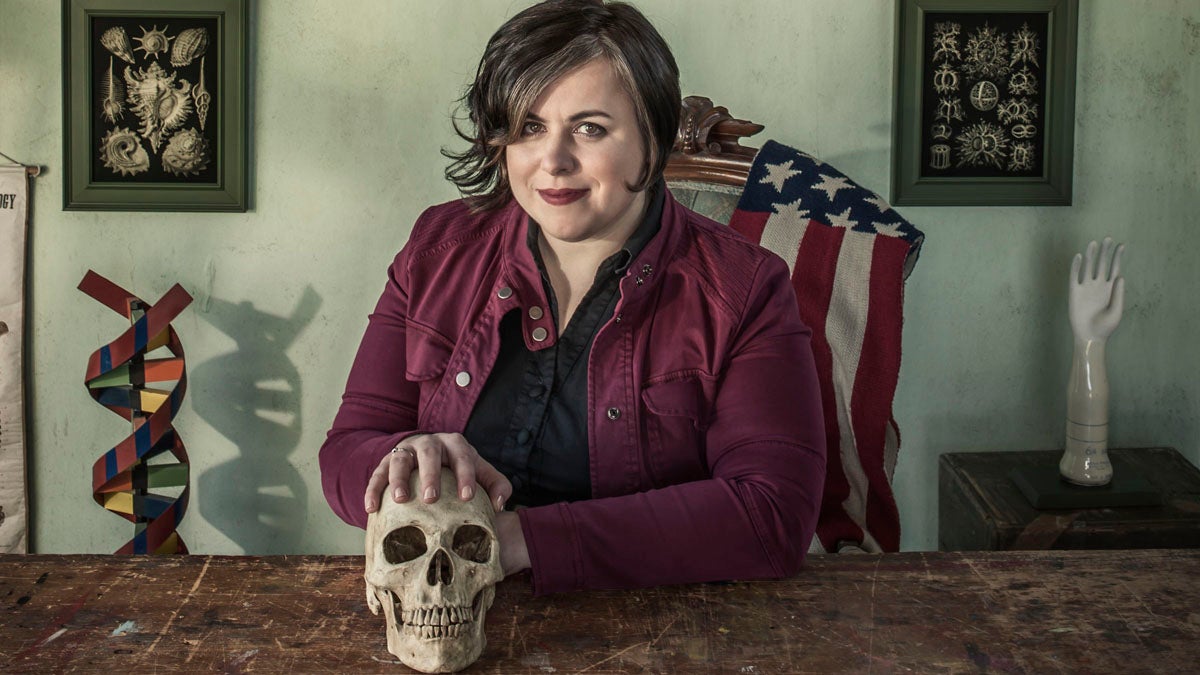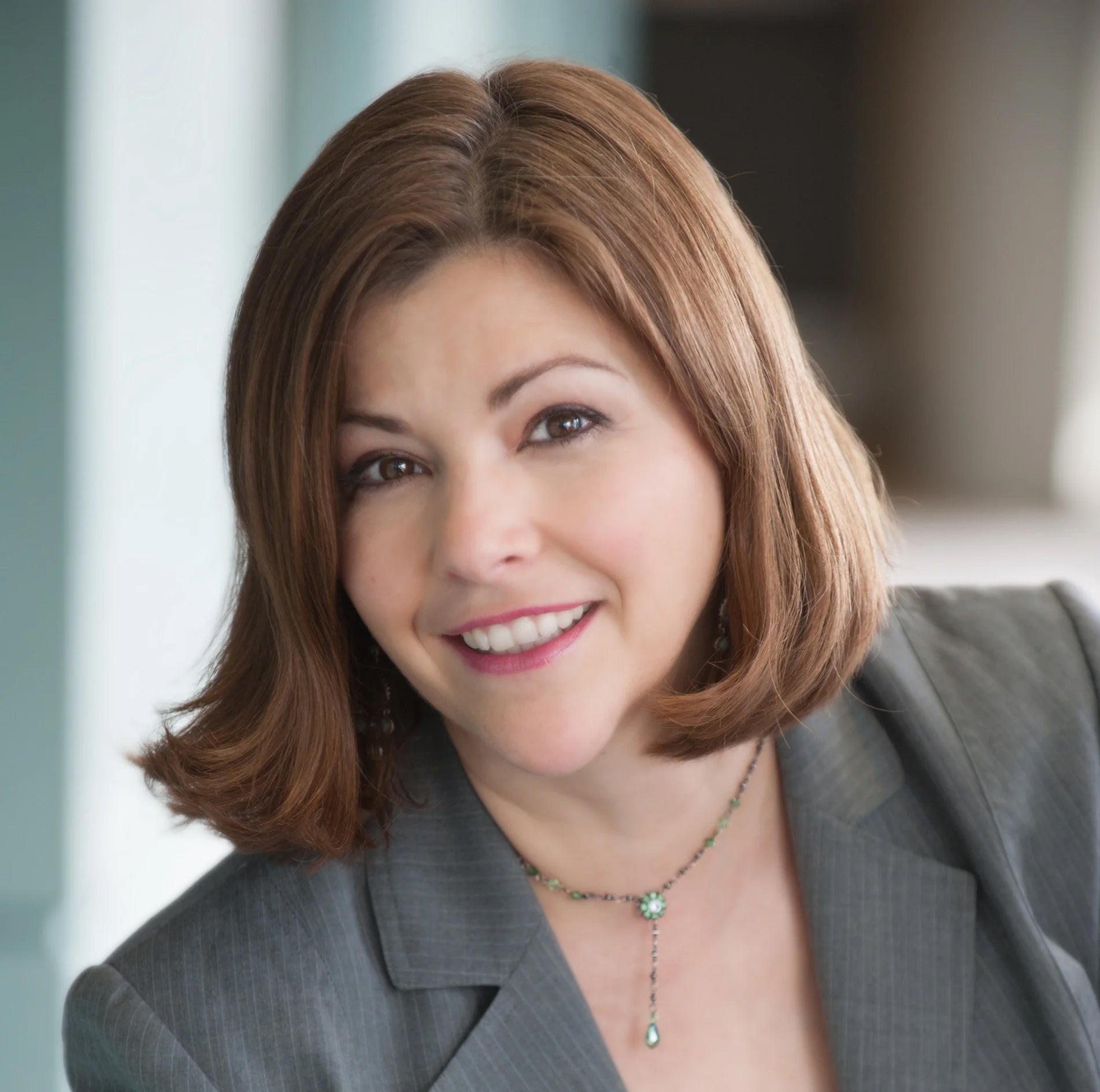Dr. Thomas Mütter — getting to know the man behind the macabre collection
Listen
Cristin O'Keefe Aptowicz spent a lot of time at the Scott Memorial Library of Jefferson University
In her new book, Cristin O’Keefe Aptowicz captures Mütter’s journey from young, sickly orphan to beloved surgeon and teacher.
A skull decorates the wall, and gruesome-looking antique surgical instruments are displayed in cases. The small design touches at the archives and special collections rooms of the Scott Memorial Library of Jefferson University are perfect, as they house many of the writings and papers of famous Philadelphia surgeon Thomas Dent Mütter. Cristin O’Keefe Aptowicz spent a lot of time here, researching for her new book “Dr. Mütter’s Marvels; A True Tale of Intrigue and Innovation at the Dawn of Modern Medicine.” In it, she captures Mütter’s journey from young, sickly orphan to decorated, flamboyant and beloved surgeon and teacher.
[Read an excerpt from chapter 1 of the book: “Monsters.”]
Aptowicz is a poet by trade, but became fascinated with the surgeon during visits to the Philadelphia Mütter museum, which attracts people from all over the world. Looking more deeply into his life and work, she found the man it is named for as intriguing as the bizarre collection of human oddities he assembled.
Mütter was born Thomas Dent Mutter in Virginia in 1811. He added the famous umlaut to his name after an extended stay in Europe. After graduating from the University of Pennsylvania’s medical school, Mütter went to Paris to study under the innovative surgeons who were working there, and perhaps he wanted to preserve a bit of European flair upon returning to Philadelphia.
A difficult path toward success
Mütter’s desire to become a physician was likely shaped by the adversities of his early life.
“His entire family died within seven years of his birth,” said Aptowicz. “His little brother died first, then his mother, then his father. He was sent to live with his grandmother and then she died.” Mütter himself was always in poor health.
“So he knew how to distinguish a good doctor from a bad one, and he knew how he wanted to be treated,” she said. Medicine also offered opportunities to a man without social standing and connections. “Medicine and surgery was one of those fields where you were judged on your talent. If you were skilled, people would go out of their way, people would come to you, and that is what happened with Mütter’s life,” said Aptowicz.
Mütter learned important new techniques in Paris. He became fascinated with an emerging field called les opérations plastiques. “It means using the plasticity of your skin to help correct something that is defective,” said Aptowicz. “Reconstructive surgery, fixing cleft palates, helping burn victims, operating on club feet.”
Mütter spoke of ‘fixing monsters.’ “In the collection, monsters is a medical term, there is a jar labeled ‘monster.’ This refers to humans so deformed that they were categorized this way,” said Aptowicz. People affected by disfiguring conditions lived marginalized lives, they were often hidden away and shunned by their communities.
Many of the surgeries were still performed without anesthesia, so people were awake as they endured cutting and restructuring. “I found letters from patients writing to Mütter that stated ‘I would rather die on your table than continue to live the life I’m living right now,'” said Aptowicz.
Once Mütter returned to Philadelphia, his flamboyant, brash style did not go over well with established members of the medical field. “He loved to dress extravagantly, he was known to match his suit to his horse to his carriage,” said Aptowicz. “He didn’t believe in following the rules.” In 1841 Jefferson Medical College hired Mütter at the age of 31, he was the youngest professor and chair of surgery.
A big collection of contributions
Students loved Mutter — he introduced teaching that had not been done before, like a style of quizzing. Mütter made many contributions to the field of surgery. He is perhaps best known for the “Mütter flap” which he used to treat severe burn victims. It was essentially an early style of grafting which is still used today.
“His legacy as a teacher is to think of patients not as problems to be solved, but as human beings, who you are trying to alleviate their suffering,” said Aptowicz. “He was the first one to perform surgery with anesthesia in Philadelphia, long before others got behind it. He also emphasized cleanliness, washing your hands and your tools, to take the extra steps for caring for patients and teaching that.”
Mütter started collecting things early on in his career. It was something most doctors did at the time to teach their students and advance their own skills. “He had extreme examples because his work was with radical surgery,” said Aptowicz who found many letters in which Mütter asked around for unusual bones or tumors. “He was always on the lookout for things to help him understand a problem or teach his students.”
Aptowicz says that the man is sometimes overshadowed by his collection, but that he should be remembered as someone who put patients first, who wanted to alleviate suffering, and who was passionate about improving and advancing his field.
WHYY is your source for fact-based, in-depth journalism and information. As a nonprofit organization, we rely on financial support from readers like you. Please give today.




